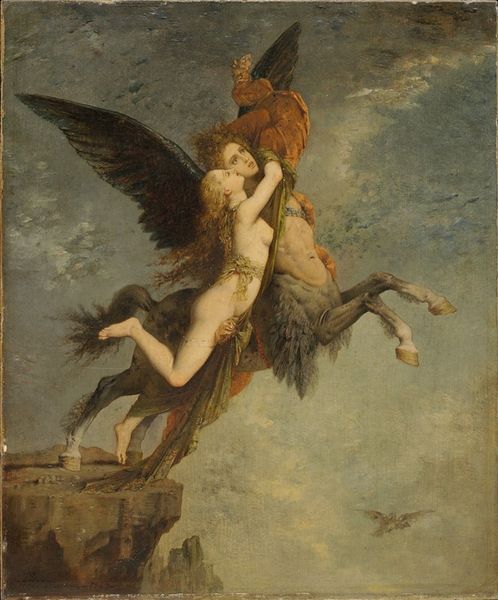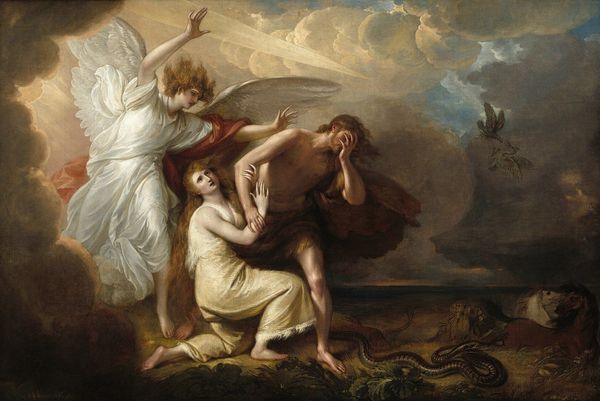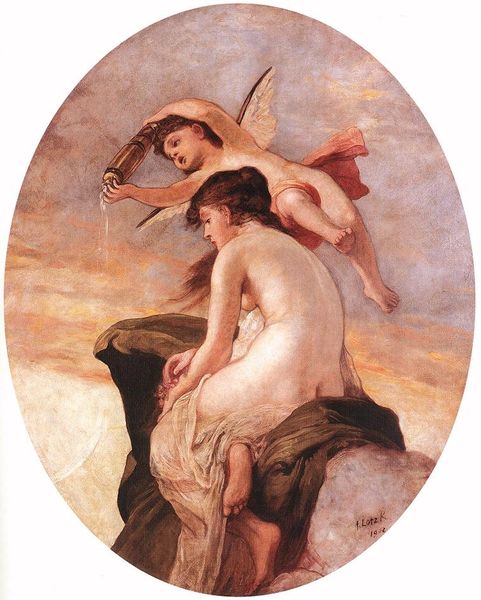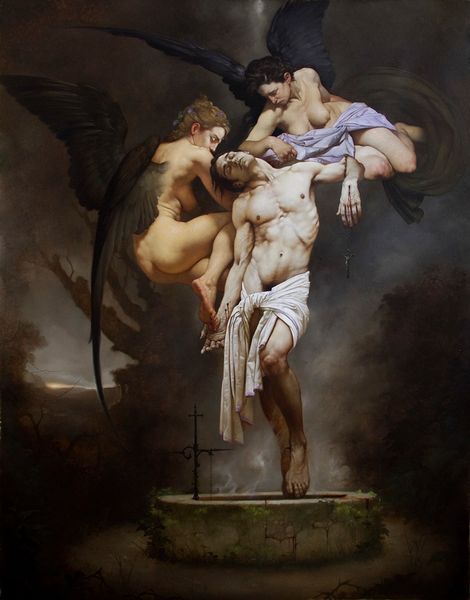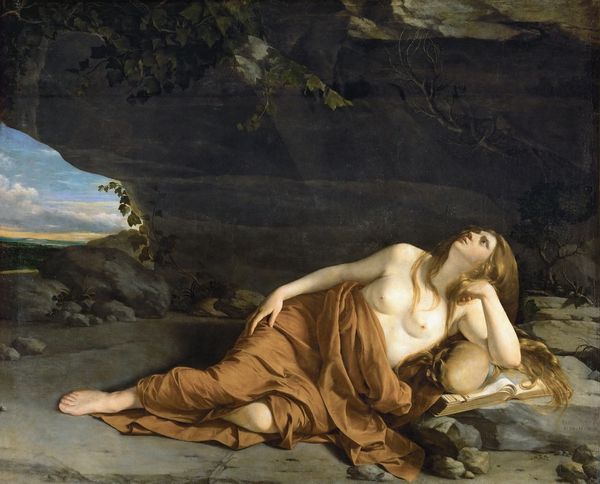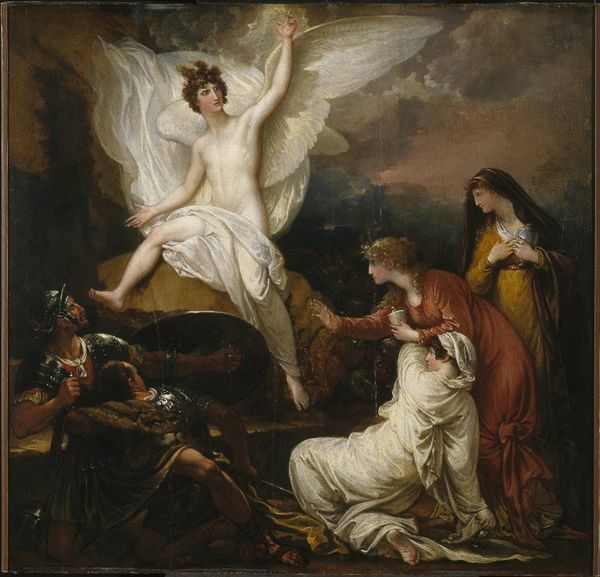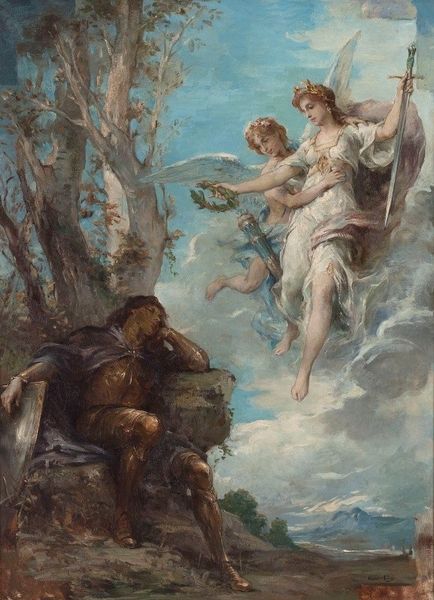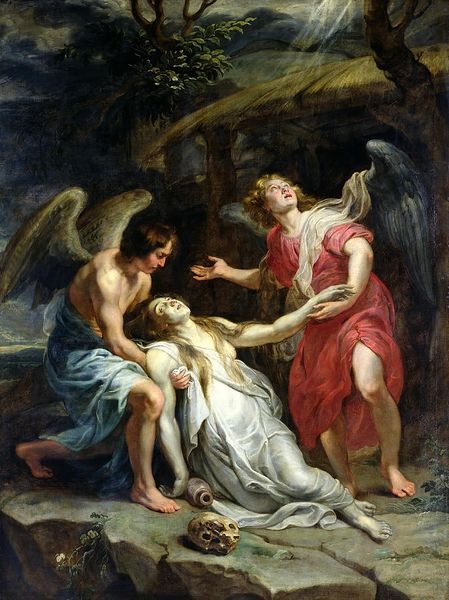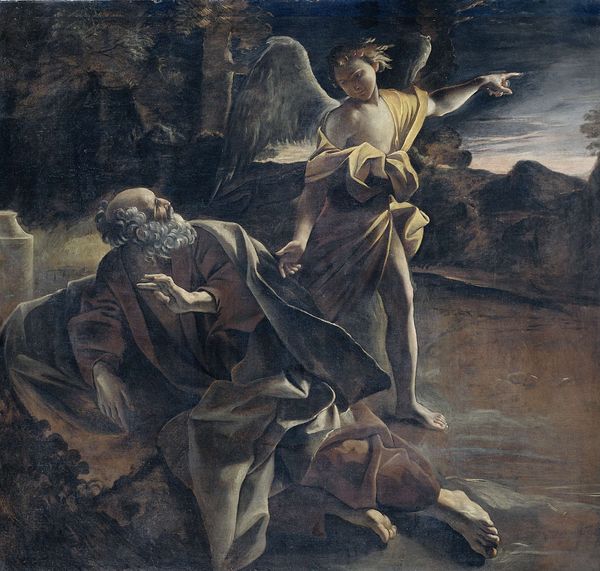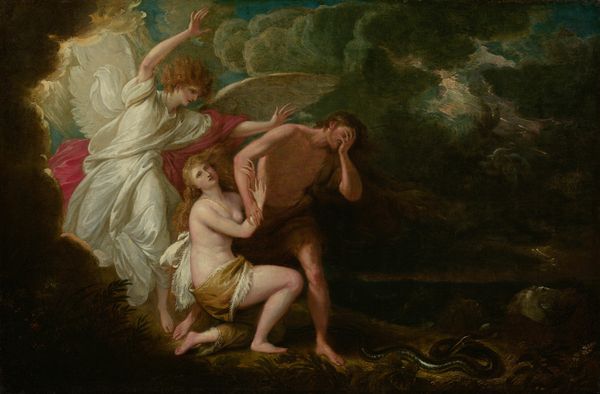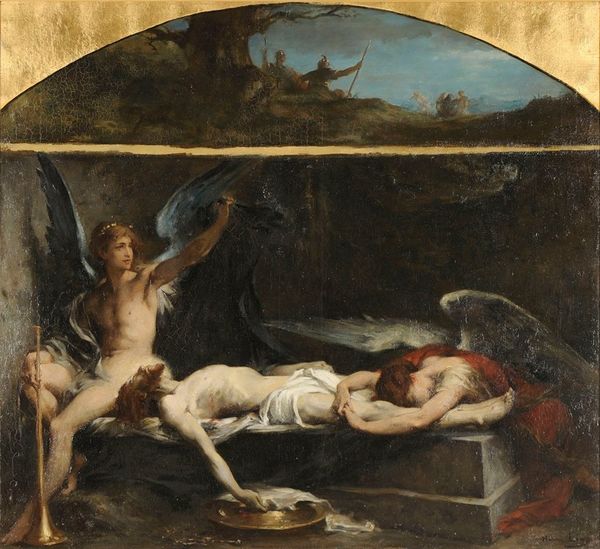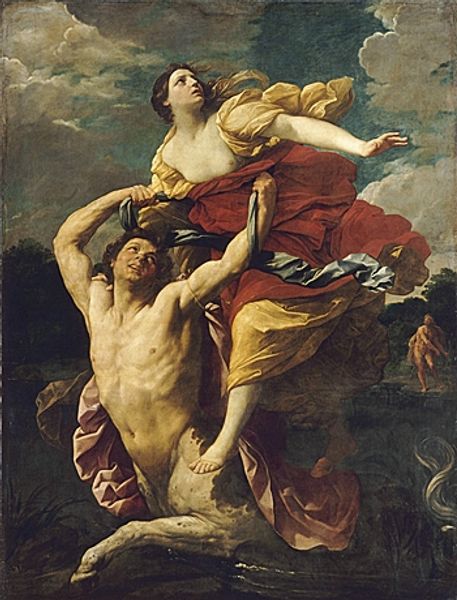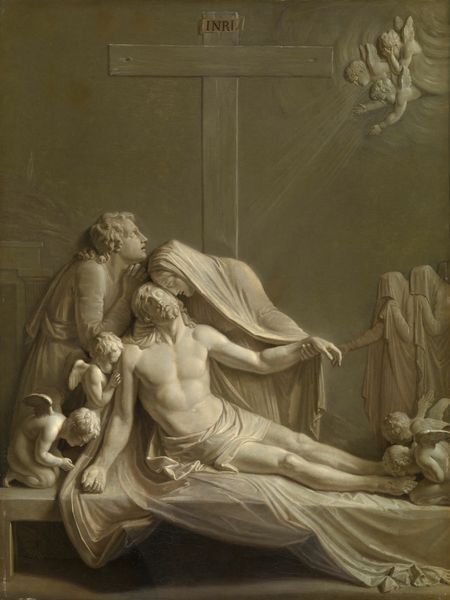
Copyright: Public Domain: Artvee
Curator: Frederic Leighton's "Elijah in the Wilderness," painted between 1877 and 1878, presents a dramatic scene, doesn't it? I'm immediately drawn in by its dreamlike stillness, and how the composition uses the contrast between the languid Elijah and the ethereal angel. What’s your initial reaction? Editor: Hmm, it's striking, I'll grant you that, but the first thing that hits me is how Leighton constructed this vision. Look at the materiality of it – all that oil paint painstakingly layered to create skin, stone, fabric, even wings, to depict a sort of luxurious destitution. It speaks volumes about the Victorian era’s fascination with both divinity and tangible wealth, doesn’t it? Curator: Absolutely. Leighton was meticulous. But look at Elijah himself. There’s this profound sense of exhaustion, not just physical but spiritual. The vast landscape seems to echo that emptiness. It makes me wonder about those moments where we feel most utterly alone and question the raw material that makes up hope, the core of our existence. Editor: I’m more interested in the literal raw materials! Think about the pigments. Where did Leighton source them? The labour involved in grinding them, mixing them with oils, layering them. These historical details shape my perspective, they show how the art piece is not divorced from production processes and commodity chains. How different from today's art-making which outsources production with digital tools. Curator: But it’s not just about replicating a scene, is it? Leighton adds layers of symbolism. The angel bringing water – a symbol of hope and renewal. The rocks, hard and unforgiving, representative of the challenges faced on a spiritual journey, and the solace one finds after traversing this arduous terrain. It reminds me of personal endurance, especially mental. Editor: See, I still think we need to ground these symbolic readings. Leighton’s choice of oil paints itself, which affords smoothness, reflects the high academic standards of the day and appeals to a burgeoning art market interested in displays of opulence and morality. Elijah may be "in the wilderness", but the raw material that is the artist and the era wasn't! Curator: That’s a really interesting point to take away here about an intersection between religious subject matter and Victorian cultural attitudes, the angel representing care amidst desolate landscapes. And it encourages us to seek it from even seemingly impossible sources of aid. Editor: Indeed, the painting becomes less about the prophet himself and more about the social conditions in which this "wilderness" scene becomes a spectacle, constructed by artists who themselves benefited from imperial networks of labour and resource extraction! So what do you do with an old painting of an exhausted prophet? You start by thinking about its social production!
Comments
No comments
Be the first to comment and join the conversation on the ultimate creative platform.
